Ok, so before I take the first step here, let me assure all of you that the centers I am showing here were taken from 45’s that had obvious issues. No perfectly good 45’s were destroyed in the collecting of these adapters. I’ve spend many hours at flea markets looking through old 45’s that needed some purpose in life. With that said, I should probably explain what I’m referring to when I say “Vinyl Break Outs”. Probably, the original name of them would be Optional Centers (O.C.) or 3 or 4 pin centers. They were adapters actually created by cutting out portions of the center of the record thus leaving a center which could be easily removed by breaking or cutting them out.
I should probably take a second and try to briefly describe the whole “hole” process. I’ll be using my favorite hole word…dinked. Yes, that’s actually a word. Basically what it means is that the center of the record has been punched out, normally to 1 1/2″. There is a tool called a dinker which was most often used for adapting records to fit jukeboxes which required the larger hole.
From my research, I’ve found that there are basically 7 different scenarios that you’ll come across when searching 45 records.
(1) An un-dinked record. This has the small 1/4″ hole that you would normally see on LP records but are also seen in 45 records. Some people call these solid centers, but that doesn’t really make sense because the center has a small hole which makes it difficult for me to call it “solid”. …just sayin’.
(2) A die cut record. This would be the 1 1/2″ hole you see on a normal 45 record. The entire center is cut out in a complete circle. Die cuts began in 1949 and continue today.
(3) A 3 pin (point) center. This would be a dinked record. The original dinked record is the Capitol O.C. 45 which is the first center I show you further down this page. When a record is being dinked, the blade cuts out specific areas while leaving others. The record is ultimately left with 3 points that connect the remaining center portion and the rest of the record.
(4) A 4 pin (point) center. This is the same as the 3 point, except there are 4 points connecting the center to the rest of the record.
(5) A jigsaw cut center. These are quite rare and appeared to be the only center that “may” have been replaceable. The dies for these were predominately used during 1956 and 1957, although fairly randomly. To me, it appears that this center could be removed and “possibly” placed back into the record. I haven’t tried this since I don’t want to ruin a perfectly good record, but it appears that this was an early attempt to design a replaceable adapter.
(6) From what I know, this center was only available in Germany. I’m putting it here since it is a removable adapter similar to the ones above. The only difference is that except instead of the record being dinked, it appears to be a die cut record with a molded center inserted into the record.
*(7) A post-manufacturing dinked/cut record. This is kind of an extra category, since it’s something that happened to the record after it had been manufactured. I’ve gone back and forth on what exactly to name these since they ultimately end up looking more like a die cut record than anything else. I’ll leave this as is until I can come up with something that makes more sense. These records have no centers for one of two reasons; the dinked (or molded-in) centers were either removed (from a 3 or 4 pin dinked record) or the center was manually dinked by the record owner. More on that further down the page.
With all that said, lets move on the adapters. The first one I show will be the first one developed.
This first adapter is actually the original one, it’s the O.C.45 from Capitol Records. The O.C. stood for Optional Center. This adapter had a 3 pin dinked center. It was made so that the center could be removed, although once taken out they were not replaceable. Needless to say, it was a one-time decision you had to make. Definitely no turning back once the dinked center had been removed. In the USA, Capitol used these between 1950 and 1953.
Since we’re already on the topic of 3 pin dinked centers, let’s take a look as some more of the same. There are far too many variations of these to display all of them, but I’ve tried to come up with a group of them that show some of the different shapes that these come in. They may look different, but they all have one thing in common; they all have 3 pins.
Here are some examples of 4 pin dinked centers. As per above, these are only a small sample of the many styles and designs that have been manufactured.
I’m putting these next adapters in this category since this is similar to the 3 point dinked center, except with these, the adapter seems to have been molded into the die cut center. As far as I know these were only distributed in Germany. Thanks to Andreas Zirnig, I’ve been able to confirm that the writing on the adapter of “Bei dickem Zapfen, Mittelstück herausdrücken” translates to “In case of a thick spindle press out the middle piece”. All that’s saying is that if you require a large hole, push out the plastic center. I think I was originally trying to make more out of it than it was, but once I fully understood the translation, it seems less a mystery. As far as I can tell these adapters came in two colors, gold and silver. At least in the silver color, one variation came with the markings I just described, and the other with none. The adapters in these two variations are very similar, but not exactly the same. You can see by the picture that the ones with the words have a slightly pointed bottom, while the one without the words does not. I have not seen a gold adapter without the words, but I’m not ruling it out. These adapters could be removed, but like the other dinked records, once they were removed, they could not be reinstalled. Again, thanks Andreas for your help!
Business owners who had jukeboxes were often faced with a dilemma. The vast majority of jukeboxes were manufactured in the USA and required the large 1 1/2″ hole in the record. If a person wanted to play an un-dinked (small hole) record in a jukebox, it clearly wouldn’t fit. Thus the “dinker” was developed. This tool allowed the user to cut out a 1 1/2″ hole from the center of an un-dinked record. They work remarkably well, normally leaving a fairly accurately centered hole. They did have a tendency though, to not leave the record in best of condition since the dinked edges were not always smooth. They were great for jukeboxes, but not necessarily good for the future collectors value of the record.
Below are three dinked centers. These are centers that I removed from record that were not dinked or die cut during the manufacturing process. It takes a little practice to get these out without severely damaging the center (since the dinkers main purpose was to preserve the record, not the center). You can see the dinker that I used in the Everything Else category on this site.
I make my annual pilgrimage (aka “Play Time”) to Nashville and always make sure I find time to Uber it over to Third Man Records. If you’ve never made it there, make sure you fit it in next time you’re in the area. The Nashville location opened in 2009 and houses a record store and a pretty cool novelties lounge (plus many things I’ve never seen like a label office and distribution center, photo studio, and the world’s only live venue with direct-to-acetate recording capabilities). It’s great just to hang out, spin a couple vinyl 45’s and see what’s new. During my last trip, I met Jess, who was so incredibly nice to us. I mentioned that I ran a 45 record adapter site and I swear that she was as geeked out about it as I am. She spent a good amount of time looking for a TMR punched out adapter and her efforts paid off! Below is a picture of the adapter. She tells me that these are actually punched out from the 45’s when they are pressed. So, it’s just their way of recycling…at least that’s the story we’re going with! Jess, I can’t thank you enough for finding this for me. It definitely made our trip!

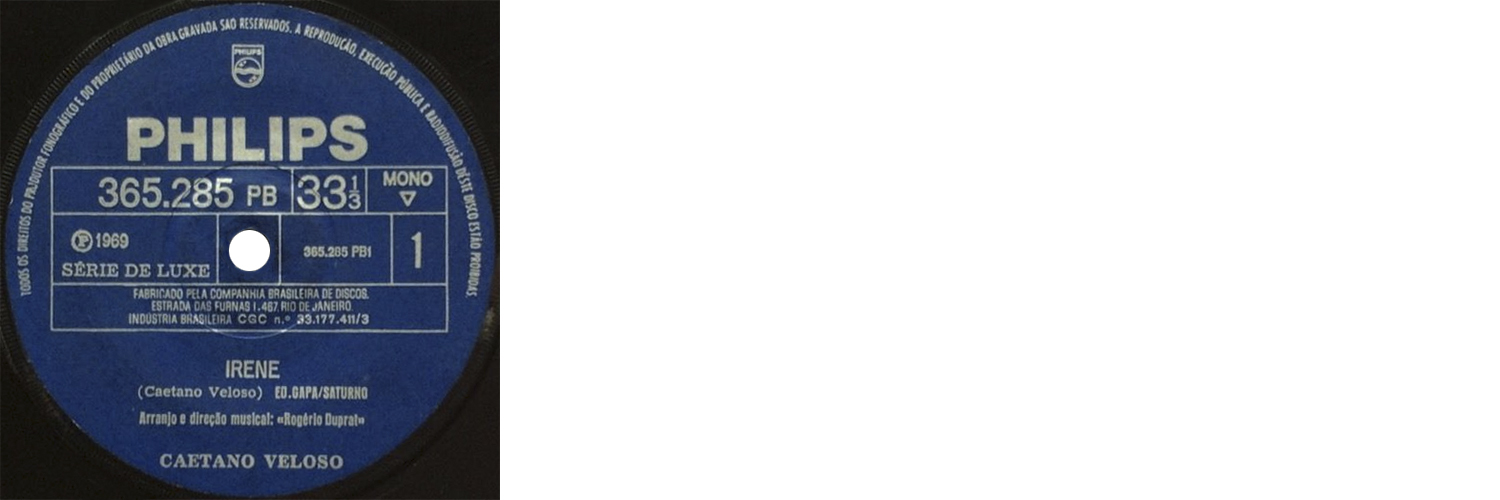

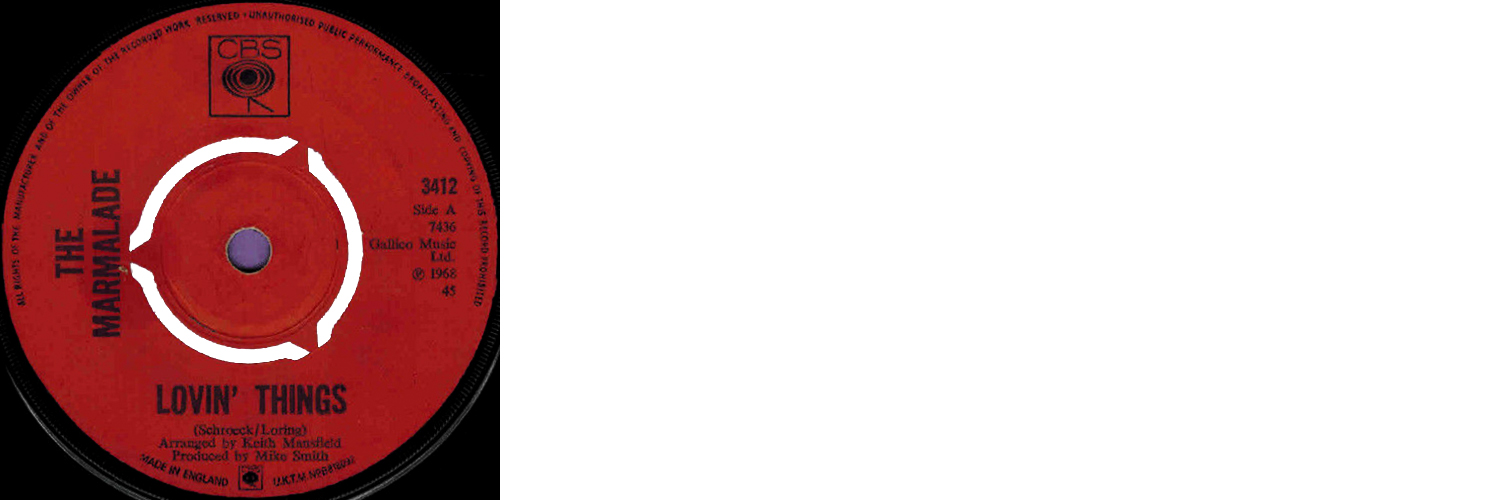
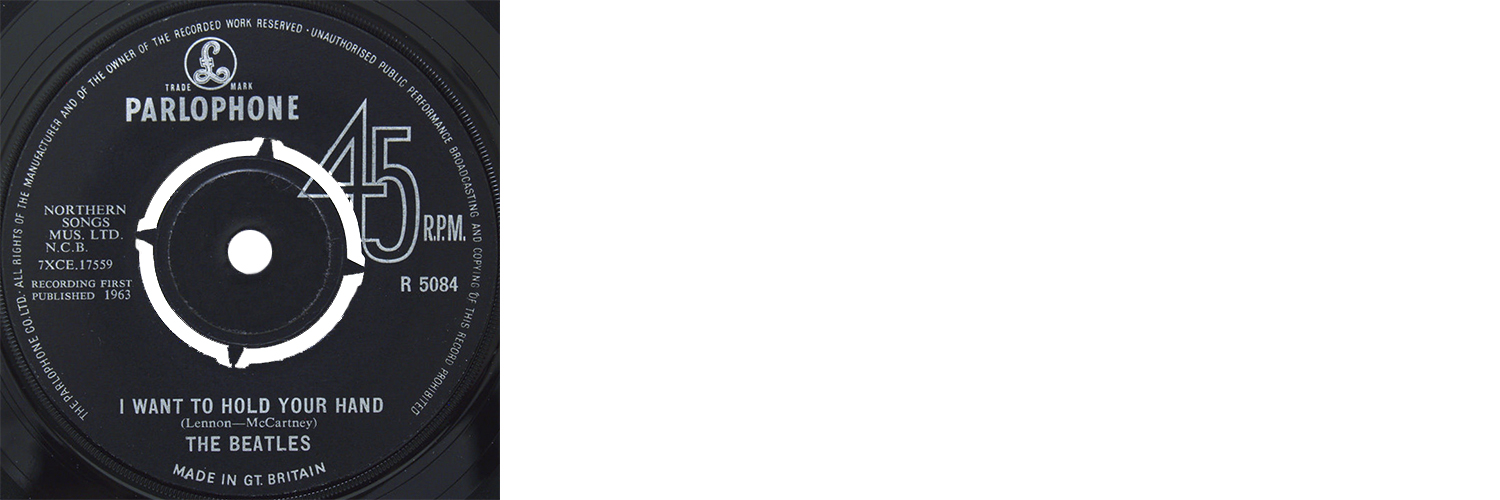
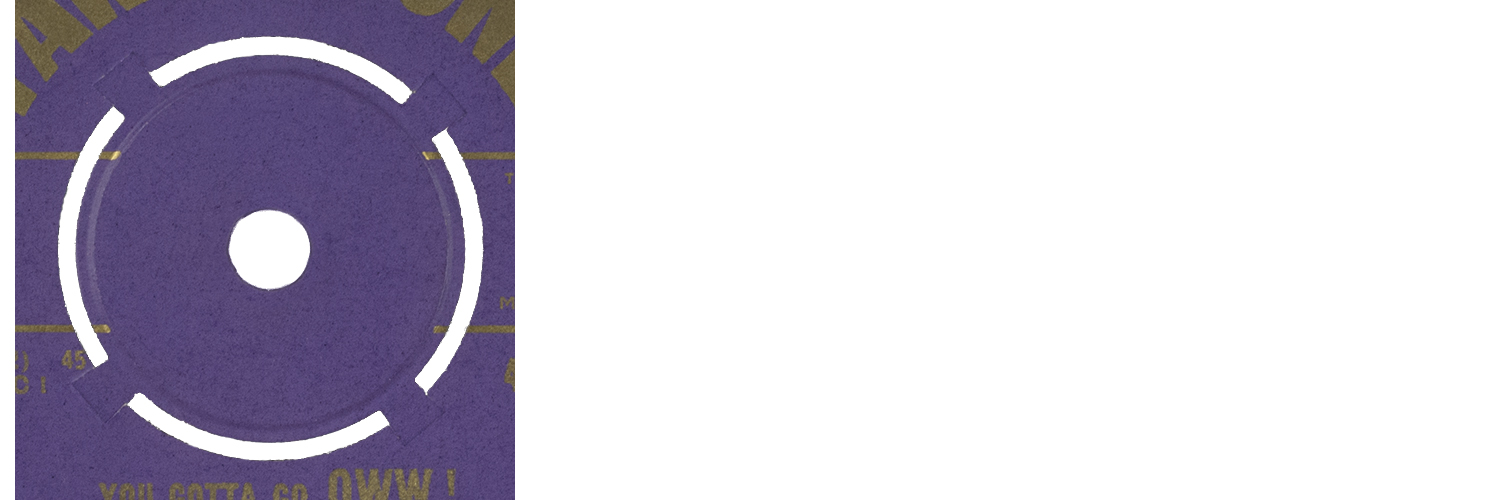
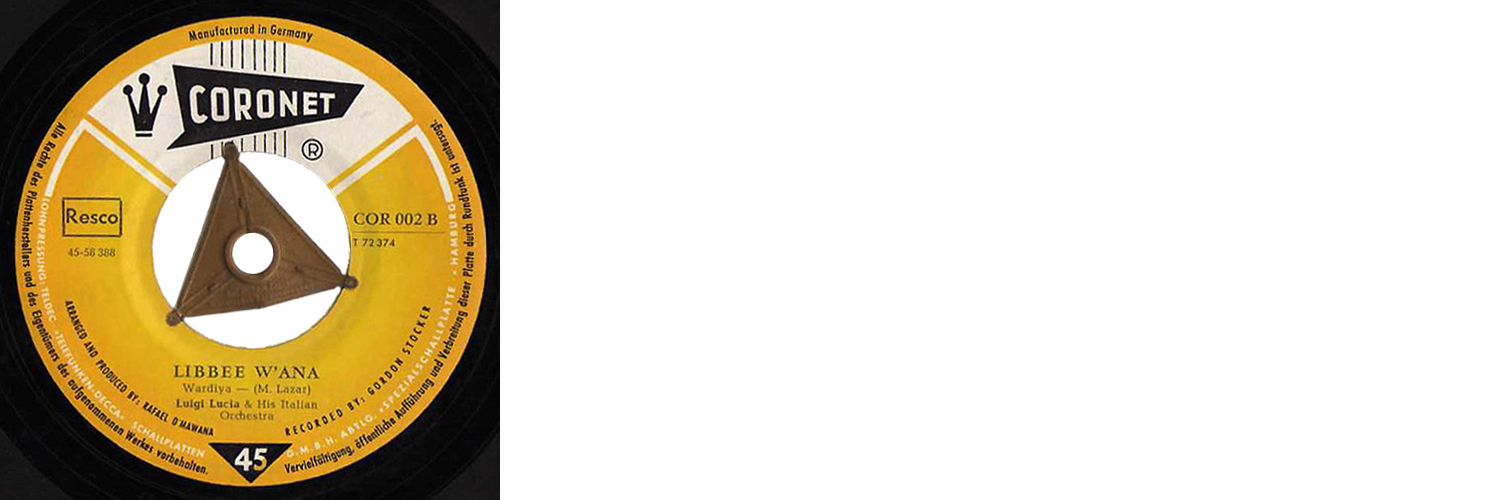

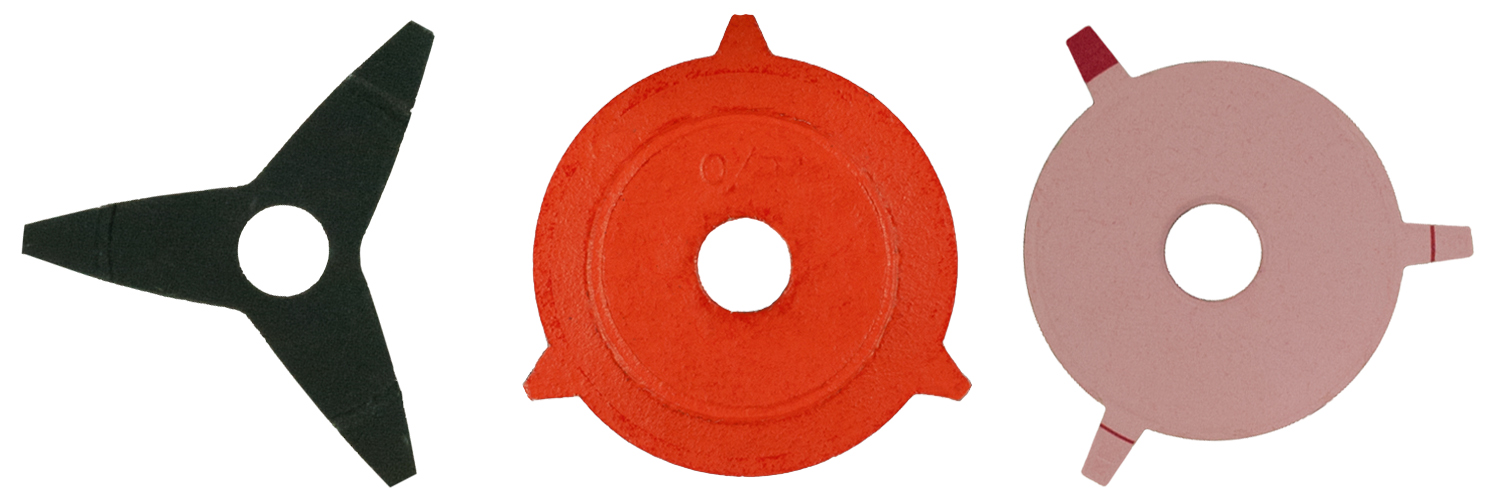
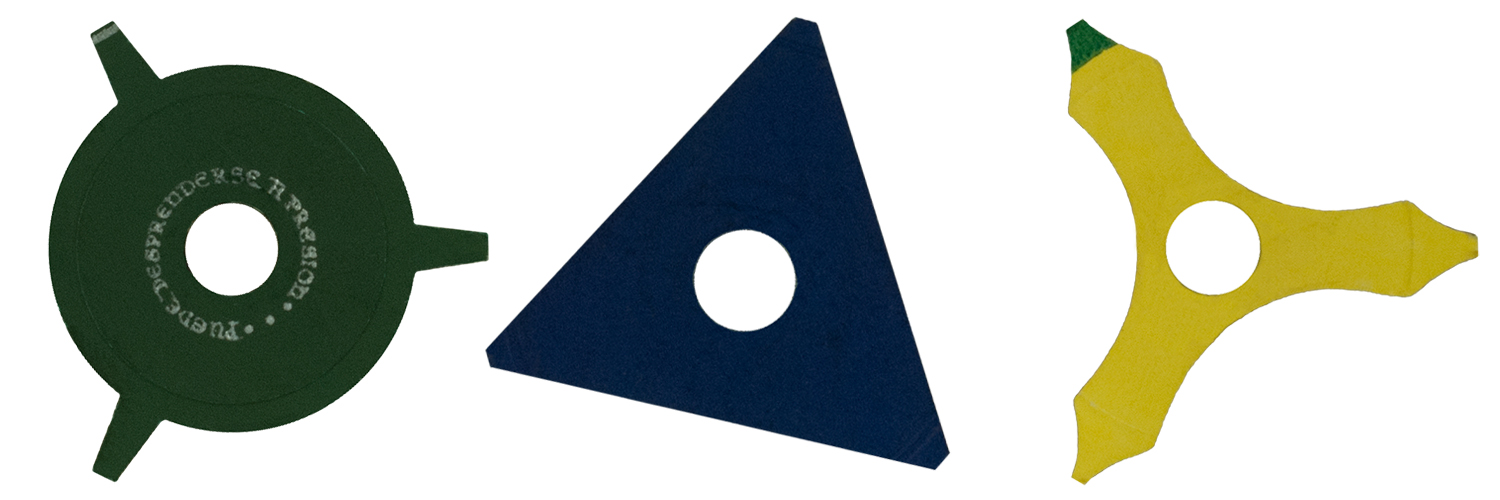
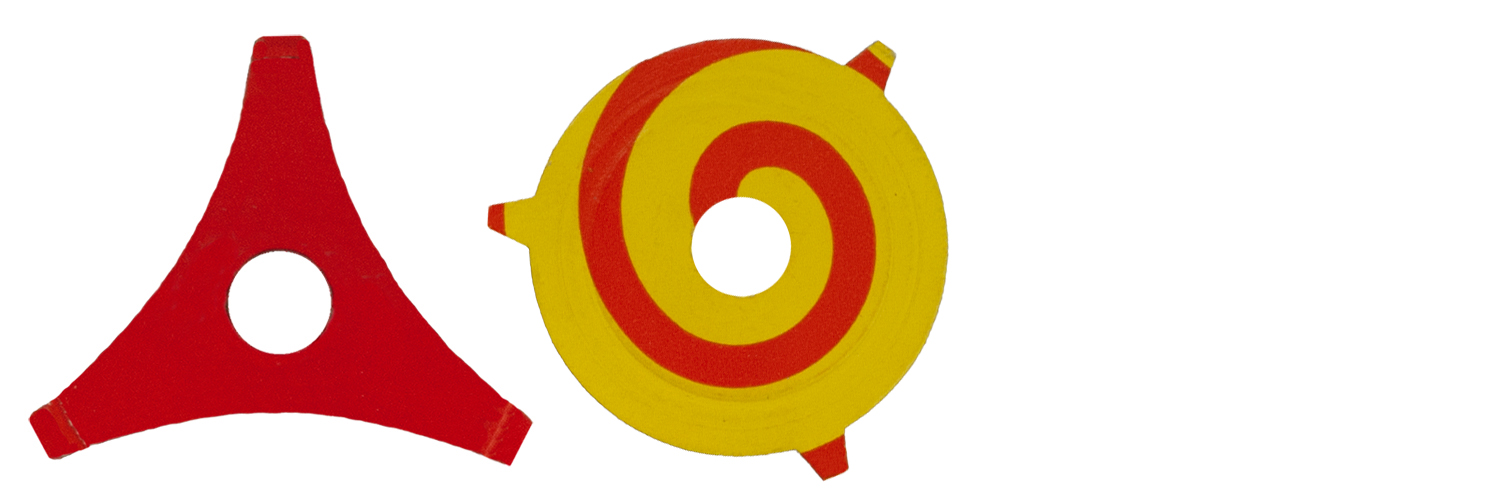
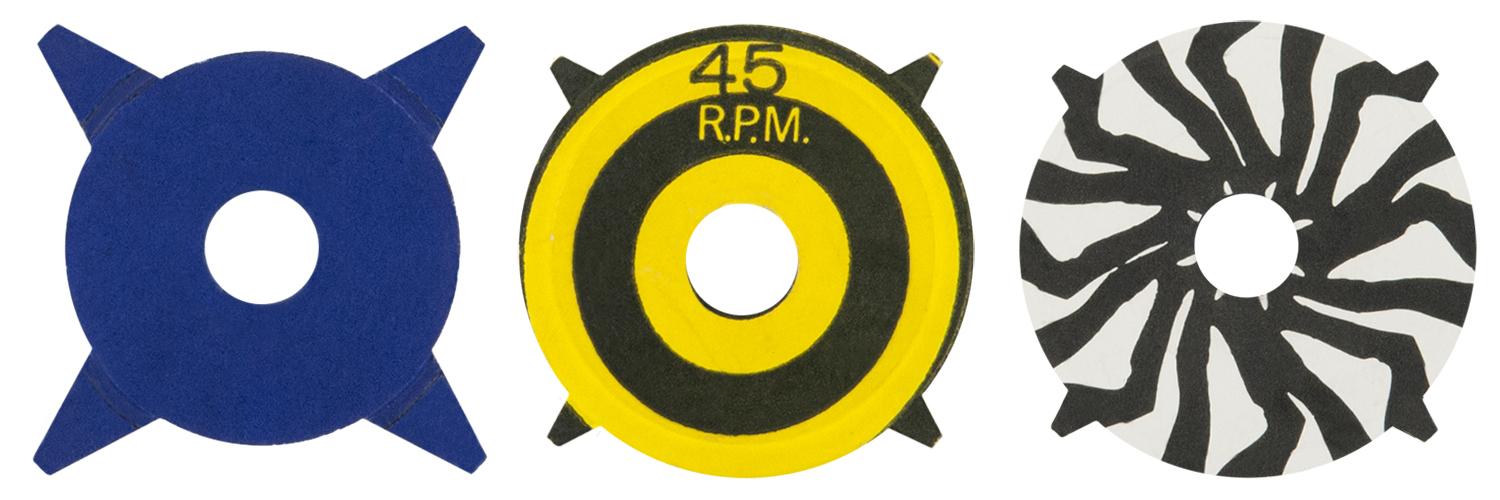
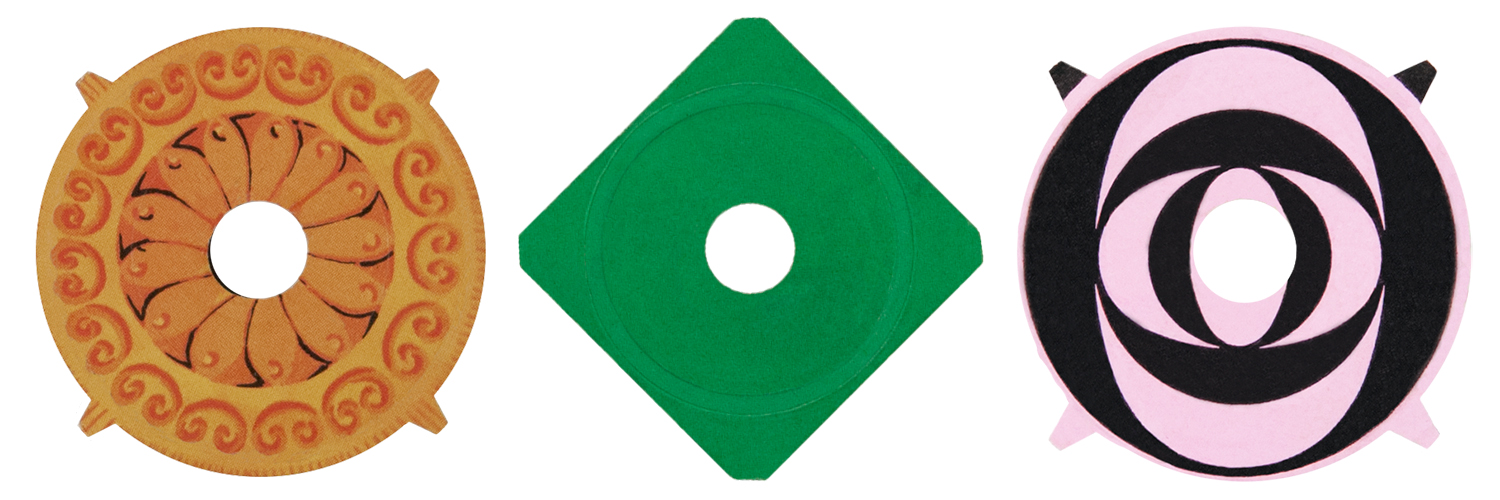



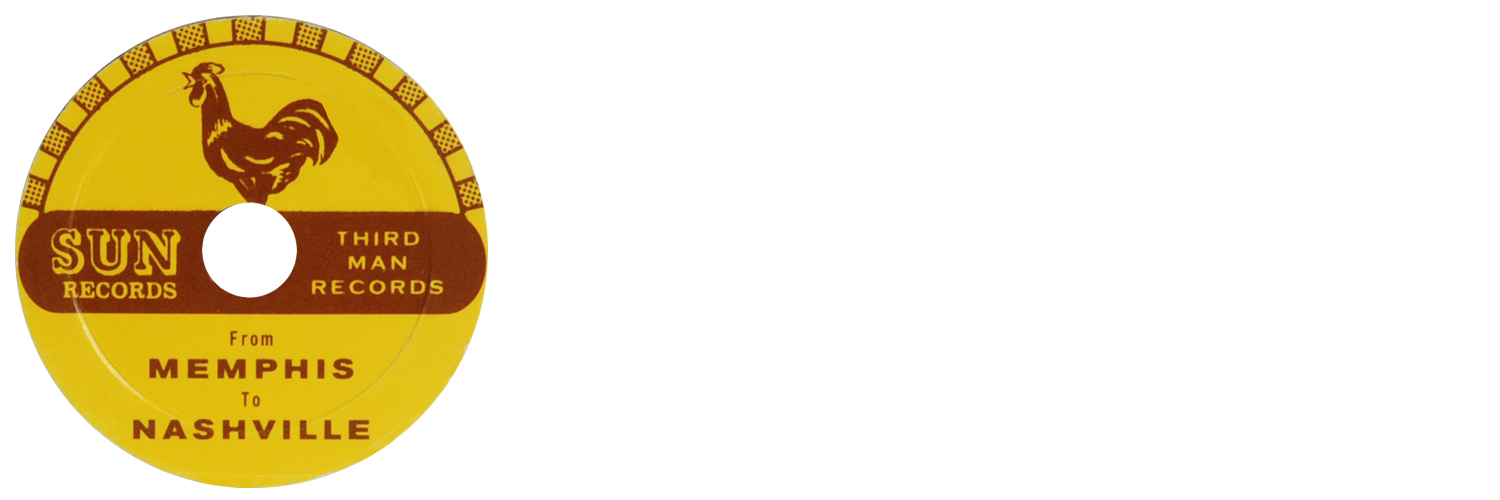
Found out about this on ‘Vinyl Engine’ site and wrote this there;
Beautiful, interesting and worthwhile site of yours. I say so sincerly since I’m a long timer 45rpm’s vintage “crate digger” and love my singles to the bone but never with those “pop-ups” adaptors. They tend to unwillingly pop-out with the handling.
Plus they don’t allow a swift drop and lift-up as with a conical heavy metal chromed platter adaptor. But since they are the “symbolic” artefact of that pro-fascination, they are the “flag” of the 45 nation. A friend of mine even got one tattooed on his arm…
A while ago I gave him all those I gathered through the years and will ask him if he has some you might not have yet. I dug out one I recently got but it’s the first one showing as the German “thin” KPL one on the vintage plastic page from your site.
Hi! Glad you’re enjoying the site. I appreciate the comments and enjoyed what you wrote. Sorry for the late reply. All my messages went to a random folder and I never saw them until now. Thanks! Bob
Thanks Andreas! I really appreciate the feedback. I’ve updated the page with your information. Bob
As a native speaker of German, let me clear-up the mystery of “Beidickem Zapfen, Mittelstuck herausdrucken”. The correct spelling is “Bei dickem Zapfen, Mittelstück herausdrücken” and it translates as “In case of a thick spindle press out the middle piece”